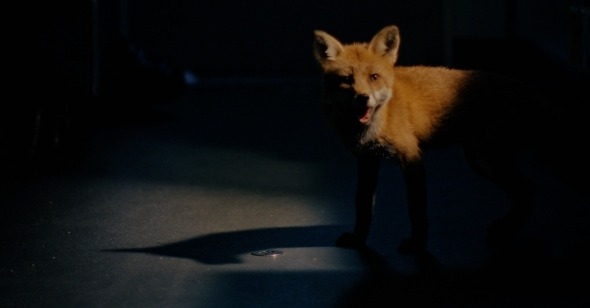Perfect Systems
By Nicolas Pedrero-Setzer
Bliss Point
Dir. Gerard Ortín Castellví, Italy/UK/Spain, no distributor
Bliss Point screens March 15 at Museum of the Moving Image as part of First Look 2025.
Beginning in 2021, the Spanish filmmaker Gerard Ortín Castellví began directing a series of short documentaries dedicated to the complex processes by which food is produced and distributed. These include Future Foods (2021), about the creation of food props used in films and television commercials; Agrilogistics (2022), about the mass production of fruits and flowers in computerized greenhouses; and now Bliss Point (2023). What is most striking about this trilogy is how strange the production of food appears. So often it is represented in film as an activity that if not pleasurable, at least takes place amid lush fields and green expanses. For the most part, Ortín’s films occlude the presence of human labor and consumption; instead, he spotlights the empty, spaceship-like labs and warehouses where meat of all kinds is processed or artificially created before it’s packaged by automated robots and sent off to supermarkets.
Bliss Point documents three distinct facets of food supply: production, advertisement, and fulfillment. Yet exactly when each process begins and the next one starts becomes rather blurry because of Ortín’s editing. Watching Bliss Point, it is almost impossible to distinguish whether food is produced before it is packaged and sold—perhaps, Ortín argues, it doesn’t even matter. Parsing out the chronology of food production is not Ortín’s focus, and his decision to present its different processes as overlapping and circuitous reflects the unceasing rhythms of a globalized economy. The food, for him, is almost beside the point. Instead, his camera becomes fixated on the different machines and computers involved in designing the look of plant-based food; the multiple gadgets required to frame and light sausages for TV commercials; the trucks and electric bikes that transport food across countries and cities. Whenever a human makes an appearance in one of Ortín’s frames, it is almost always in the periphery—with one exception, but more on that later. Above all, it is objects that take center stage in Bliss Point, their prominence reflecting the blow automatization has dealt workers everywhere.
Early on in Bliss Point, Ortín films an electric bike’s wheel. Later, he returns to it. Soon after, he films the face of the man whose pedaling keeps it spinning. This marks his camera’s first face-to-face encounter with a worker. It’s a shock after minutes on end of faceless machines at work, what Ortín does next is even more alarming: he simply cuts away from this person to another piece of the bike. It’s an astonishing sequence, revealing the face of a man to be as important, or irrelevant, as the other components of his bike. The man is already seen as a mere collection of limbs that push a production process forward or occasionally slow it down. Ortín’s images of robots packing boxes and 3-D printers stacking food samples do not reflect a visual fetish for robots, but an admission that that world is already here and in desperate need of being visualized in order to be understood.
Following this, there is another startling sequence in Bliss Point in which a fox sneaks into a stainless-steel kitchen. Agrilogistics had a similar scene in which a llama appeared, seemingly out of the blue, inside an industrial greenhouse, though it was later revealed the llama belonged to the greenhouse’s petting zoo. Both animals register utter befuddlement navigating such lifeless environments, the llama cautiously traversing the greenhouse and the fox slowly sniffing around the kitchen before scampering off into the night. On the one hand, Ortín appears to stress the unnatural quality of these industrial spaces, which seem to unnerve and repel wildlife. On the other, he seems to stage a cinematic intervention of sorts, filming the occupation of spaces bound by human logic taken over by animal behavior—here, Ortín invokes another Spanish filmmaker, Luis Buñuel, whose own cinematic critiques of social norms often summoned animals into uncommon spaces (think of the rooster in Los Olvidados or the sheep in The Exterminating Angel).
As with the cameo of the human face, Bliss Point soon abandons the fox in its final stretch, an extended sequence that tracks the movement of automated fulfillment robots at an Amazon-like warehouse. Here, Ortín offers a nightmare version of the light cycle race from Tron (1982). He switches back-and-forth between a wide shot showing dozens of robots darting across a warehouse floor and apparent POV-shots from the robots as they pick up different packaged goods. It’s a fascinating image—a dual testament to Ortín’s documentary access and knack for spotting odd scenes amid sterile environments—and quickly reveals itself as sinister because of its soullessness. The film has outlasted its human and animal appearances, ceding itself over to the rhythm of robots. And so, with the camera perched near the ceiling of the warehouse, looking down on dozens of scuttling fulfillment robots carrying out their programmed routes, the film’s ironic title is revealed.
